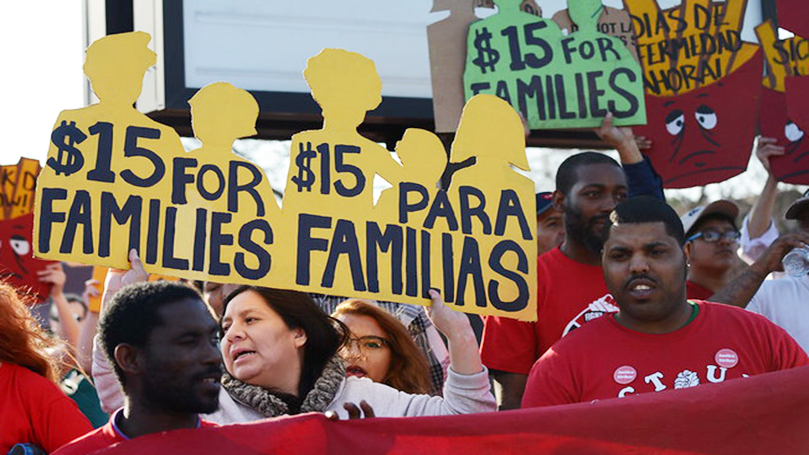
On May Day, International Workers Day 2022, we have much to celebrate: the recent struggles and victories of the Starbucks and Amazon workers.
From Boston to Seattle and parts in between, more than 200 Starbucks stores are in the midst of union organizing drives, led mostly by young workers. And for the first time, an Amazon facility has been organized. Given the incredible economic, political, and cultural power Amazon wields, the victory of the Amazon Labor Union at the Staten Island facility is particularly historic. Amazon’s profits doubled to $8.9 billion during the pandemic in 2021. Government tax breaks and a low corporate tax rate allowed Amazon to dodge $5.2 billion in taxes last year. This kind of power not only challenges worker power but also threatens democracy.
Despite all this, the workers at the Staten Island warehouse won the right to organize a union. They won despite Amazon’s rabid anti-union campaign that included surveilling, harassing, and firing union supporters and holding mandatory meetings to propagandize against unions. And another union victory may be imminent: 1,500 workers at a second Amazon warehouse on Staten Island have completed their vote this week.
The lesson for workers is clear. Corporate power is huge. But worker power is bigger—that is, when workers organize, unite, and fight back.
This lesson—unity is key to winning—is a gold nugget for any social justice movement, whether organizing to end police violence, stop privatization of education, or convert to a green-energy economy.
What’s needed is unity of purpose, unity of action, unity of all the people—black, brown, Asian and white, women, Indigenous, LGBTQ, immigrants, differently abled.
Today we need unity to build the peace movement and fight against the right-wing danger, two struggles that are inseparable from that for workers’ rights. This means fighting for an end to Russia’s invasion of Ukraine, a cease fire, the withdrawal of troops, and an end to U.S. arms shipments. It also means keeping our eyes on the prize of defeating the Trump forces in the November midterms.

The union drives at Starbucks and Amazon, and the teachers’, manufacturing, and retail strikes of 2018–20, are part of a long line of victories and struggles that harken back to the demand for the eight-hour day. The movement for the eight-hour day began over 200 years ago but exploded on May 1, 1886, when workers around the country walked out on their jobs in a general strike. “Eight hours for work, eight hours for rest, eight hours for what we will.” In Chicago, for 10 days workers marched and rallied for this demand. The sight of this unity must have shaken the powers that be, because on May 4 at Haymarket Square, the police were ordered to disperse the crowd, resulting in violence, a bombing, deaths, and the trial and execution of seven martyrs and the imprisonment of 15 others, one of whom took his own life. These events eventually led to the Second International’s declaring May 1 a day of strikes for the eight-hour day and the adoption of International Workers Day in 80 countries.
With each union newly formed, strikes won, and better working conditions created, workers are steadily paving the road toward a better society, one in which a worker’s labor is not valued according to the profits “earned” by corporations but by the contribution one’s labor makes to people, the future generations, and to nations and the world. Each victory—and each struggle won or lost that gives workers organizing and leadership experience—is a step toward a better world.
Where workers lead, socialism will surely follow.
Happy International Workers Day!
Image: Fibonacci Blue (CC BY 2.0).


 Join Now
Join Now